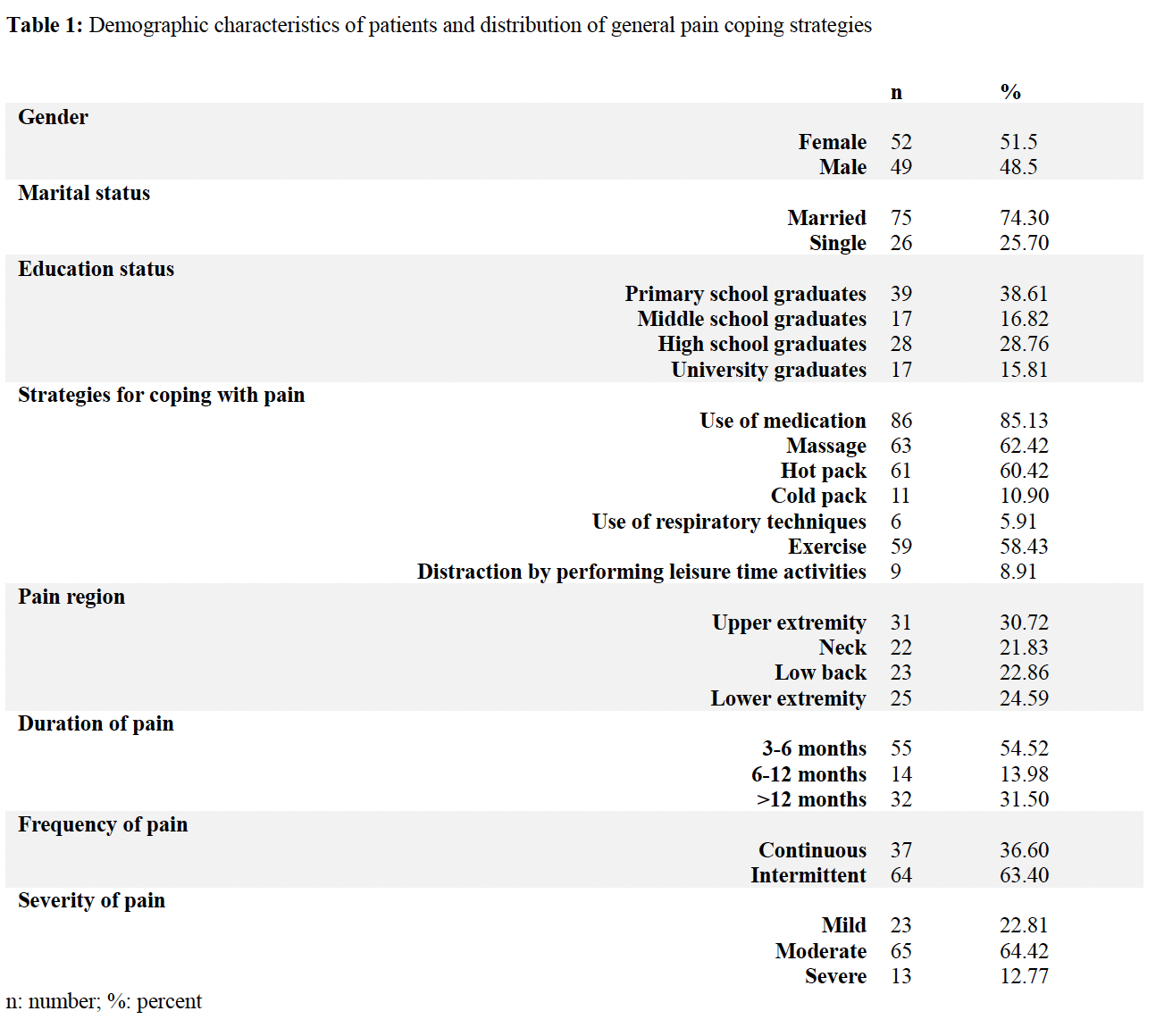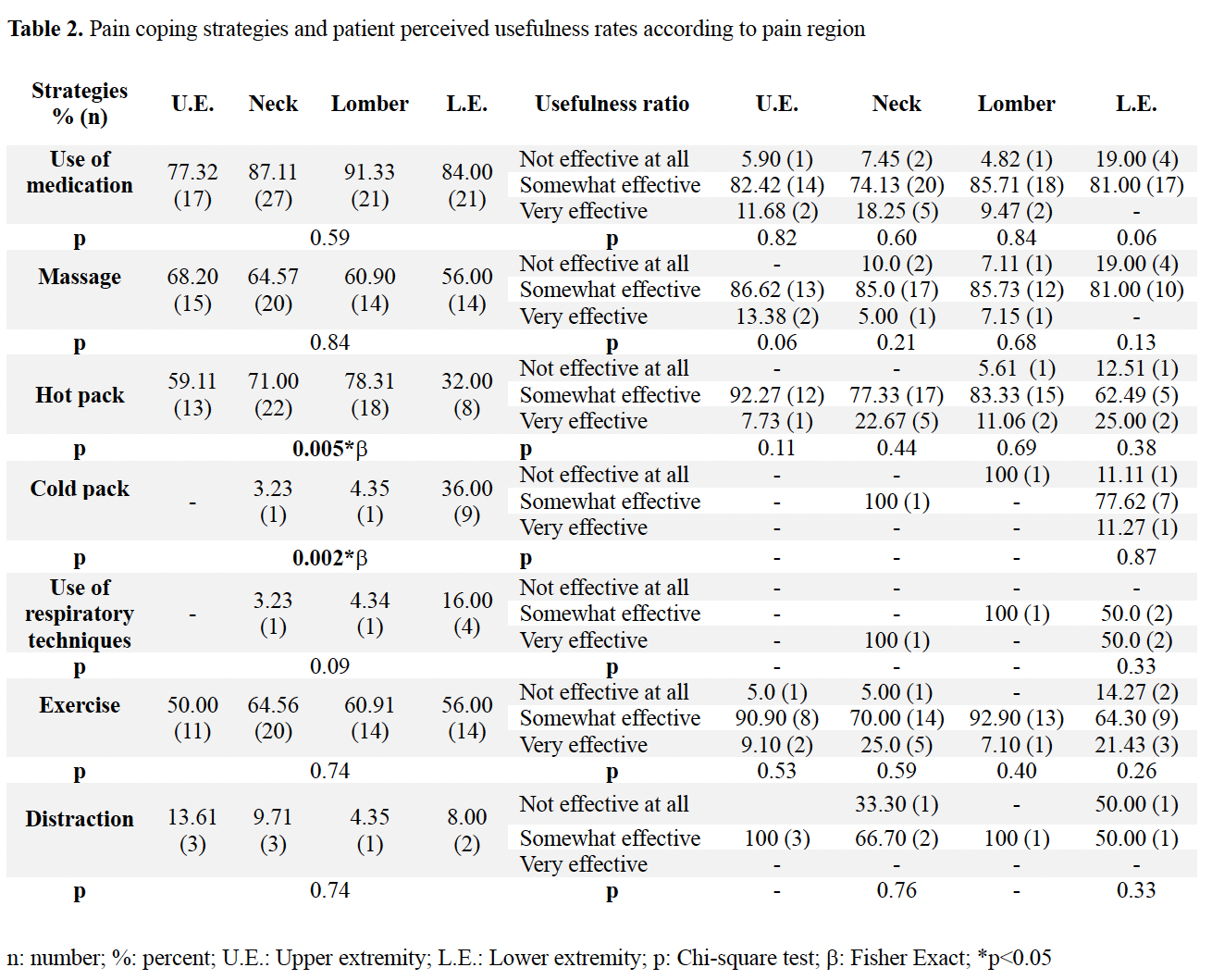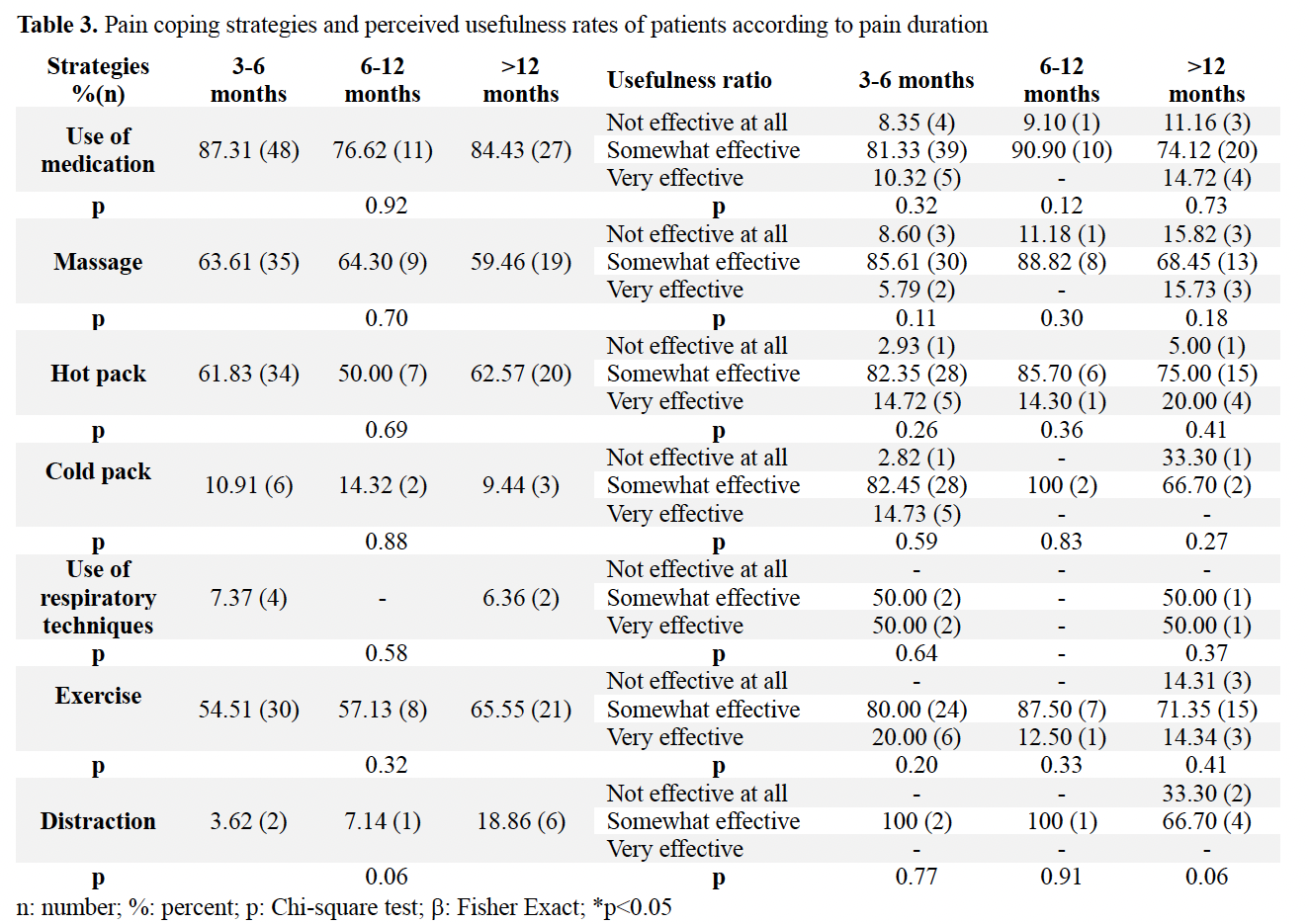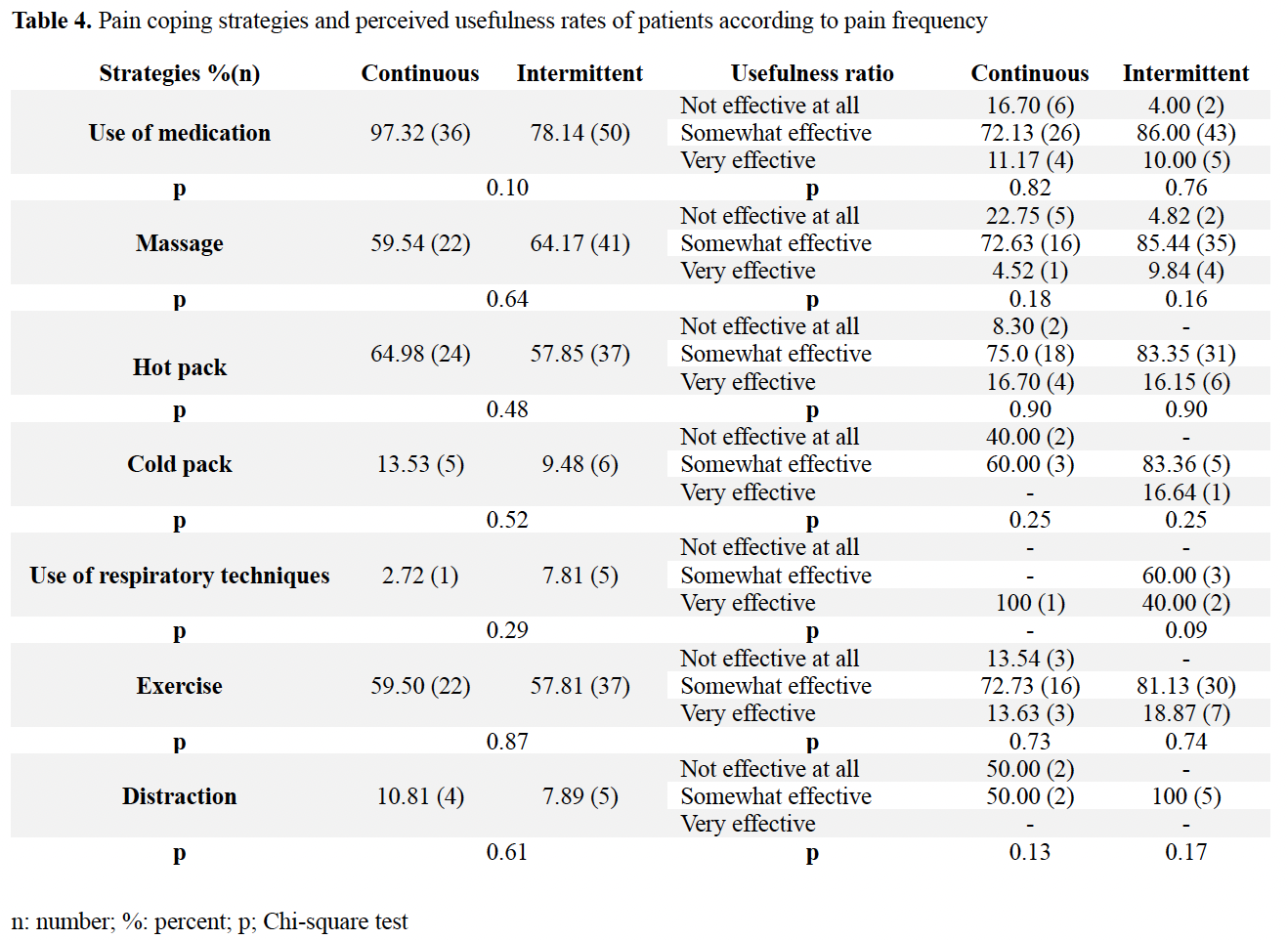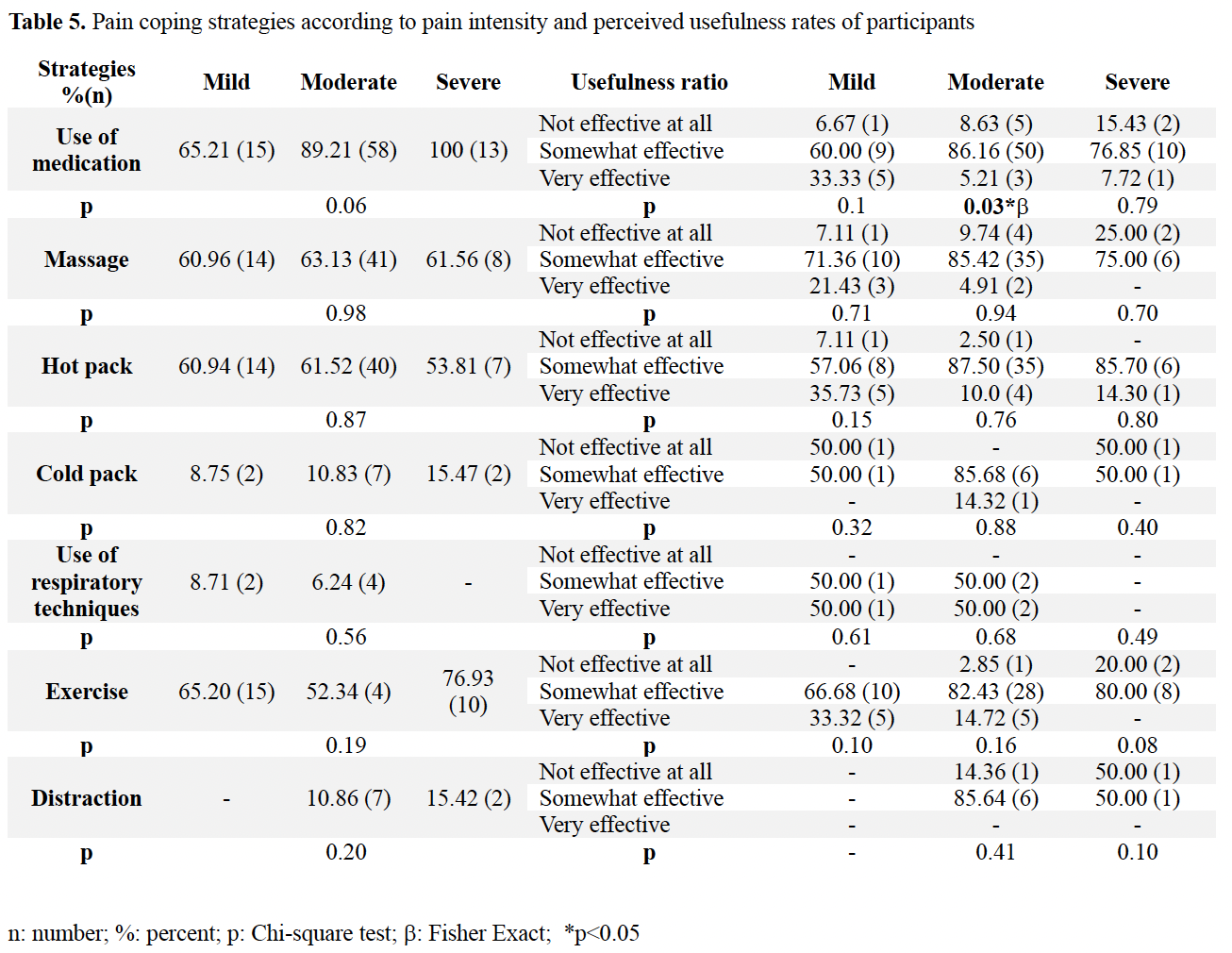INVESTIGATION OF COPING METHODS AND PERCEIVED BENEFITS OF INDIVIDUALS WITH CHRONIC MUSCULOSKELETAL PAIN
- Original Article
- Published on January 02 2025
 Sabiha Bezgin
Sabiha Bezgin
 Tezel Yıldırım Şahan
Tezel Yıldırım Şahan
 Fırat Çiçekli
Fırat Çiçekli
 Murat Özkaya
Murat Özkaya
Purpose: The aim of this study is to examine the coping methods of individuals with chronic pain due to musculoskeletal problems and the perceived usefulness of the method they apply in the treatment of their pain, according to the region, severity and duration of pain.
Method: Individuals aged 18-65 years with complaints of musculoskeletal pain for more than three months were included in the study. Pain assessment was performed by inquiring about the region of pain, frequency, intensity, and duration of pain. Pain intensity was evaluated with a visual analog scale. The methods used to reduce pain and the effect of these methods were questioned.
Discussion: A total of 101 individuals (52 women and 49 men) with a mean age of 42.11±11.49 years participated in the study. It was determined that individuals with low back pain most frequently preferred hot applications to cope with pain, while individuals with lower extremity pain most frequently preferred cold applications (p=0.005 for low back pain, p=0.002 for lower extremity pain). No significance was found in the preference for various coping strategies for different pain duration, frequency, and intensity (p>0.05).
Conclusion: As a result of the study, it was determined that the approaches to cope with pain of individuals with chronic musculoskeletal pain consisted largely of physiotherapy and rehabilitation modalities and that they benefited greatly from these modalities. It would be useful to raise individuals' awareness about the correct application methods related to pain management in physiotherapy, which is scientifically dominant for agents such as massage, hot-cold agents, and breathing techniques.
